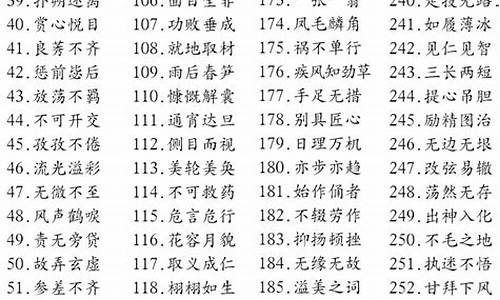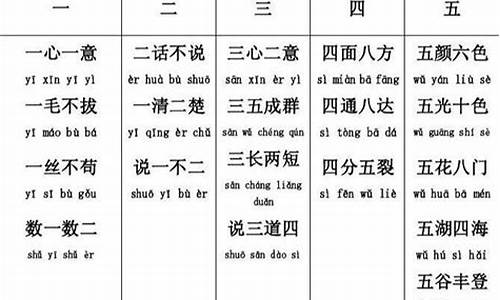hospitalization属于复合词_hospitalization
1.hospital与hospitality有什么关系,有同样的词根但意思大相径庭
2.想了解一些简单的英语语法知识。详细见下!
3.求翻译 住院 出院 做手术
4.名词后缀有哪些
5.请帮忙中翻英(病历)2

对护理的定义,由于历史背景、社会发展、环境和文化以及教育等因素的不同,人们有不同的解释和说明。接下来我为大家整理了护理程序英语写作范例,希望对你有帮助哦!
A systematic method of providing nursing care. It provides a framework for planning and implementing nursing care.
Components 1. Assessment (ends with the formulation of a nursing diagnosis)
2. Planning
3. Implementation
4. Evaluation
Assessment Definition:
The process of gathering, verifying and communicating data about a patient. Data is gathered from a variety of sources and is the basis for actions and decisions.
Data Collection
1. Begins upon admission
2. Is a continual action throughout each phase of the nursing process
3. Data is classified as either objective or subjective
Objective Data
Factual data observed by the nurse. No conclusions or interpretations are made.
Examples:
B/P 100/62
Voided 200cc dark amber colored urine
Subjective Data
Information given verbally by the patient.
Examples:
"I itch all over."
"My stomach aches."
"I'm afraid of going to surgery tomorrow."
Methods of Collecting Data
1. Observation
2. Interview
a. Formal
b. Informa
c. Examination
Analysis and Interpretation of Data
1. Continually update and revise
2. Cluster data
3. Identify nursing diagnoses
Nursing Diagnosis A statement of an actual or potential response to a health problem that the nurse is competent and licensed to treat.
Actual: a situation that exists in the here and now.
- alteration in comfort
- ineffective breathing pattern
- impaired skin integrity
Potential: a situation which may cause difficulty in the future.
Examples:
- high risk for injury
- high risk for sleep pattern disturbance
- high risk for impaired skin integrity
Nursing Diagnosis Statement Contains two parts:
1. The statement of the patient problem
2. The contributing factors or probable causes of the problem - the etiology.
The two parts are joined by the words "related to"
Examples:
1. Ineffective breathing pattern (problem) related to chest pain (etiology)。
2. High risk for injury (problem) related to poor vision and decreased mobility (etiology)。
3. Alteration in nutrition (problem) related to nausea (etiology)。
Things to remember:
1. Only one nursing diagnosis per patient problem.
2. Each nursing diagnosis can he more than one etiology.
3. The nursing diagnosis is not a medical diagnosis - oid using a medical diagnosis as part of the etiology.
4. Nursing diagnoses identify health problems and enable a plan of care to be developed to achieve a maximal level of wellness.
5. Use the NANDA list to help you formulate your nursing diagnosis.
Planning The phase of the nursing process in which you develop a plan of care and determine how you are going to solve, lessen or minimize the effects of the patient's problems.
There are 4 steps in this phase.
Step 1: Setting Priorities
1. Determine which problem poses the greatest threat to the patient's well-being.
- This becomes
- Continue to prioritize in this way.
2. Find out which problems the patient feels are most important.
Step 2: Writing Goals
1. A goal is a specific and measurable objective designed to reflect the patient's highest level of wellness and independence in function.
2. The goal is derived from the first part of the nursing diagnosis statement.
3. There are 2 categories of goals:
a. Short term - can be met fairly quickly (hours or days)
b. Long term - cover a longer time span
Guidelines for Goal Writing
1. Write goals in observable or measurable terms.
2. Write goals in terms of patient outcomes not nursing actions.
3. Keep goals short and specific.
4. Designate a time for achievement of the goal.
Examples of Goals
The patient will be free of infection throughout hospitalization.
The patient's lungs will remain clear postoperatively.
The patient's skin will be healed by 1/31.
Step 3: Developing the Expected Outcomes
Expected Outcomes define when a patient goal has been met and assist in evaluating the extent to which the nursing diagnosis has been resolved.
They are stated in observable or measurable terms.
Functions:
1. Provide a direction for nursing activities.
2. Indicate what should occur during the time span indicated in the goal.
3. Used to evaluate the effectiveness of the nursing interventions.
Example
Goal: The patient's lungs will remain clear postoperatively.
Expected Outcomes:
- the sputum will remain white.
- the patient will remain afebrile.
- the lungs will be clear to auscultation.
Step 4: Planning Nursing Actions
Nursing Actions are those things the nurse plans to do to help the patient achieve a goal.
Nursing Actions are derived from the etiology of the nursing diagnosis.
Guidelines for selecting nursing actions
1. Be sure the actions focus on the etiology of the nursing diagnosis.
2. Must be safe for the patient.
3. Must be congruent with other therapies.
4. Should be based on principles of nursing and disciplines related to nursing.
5. Must be based on ropriate rationale.
6. Each nursing diagnosis should he its own set of nursing actions.
7. Choose actions most likely to develop the behior in the goal.
8. Must be realistic.
9. Use the patient as a source for choosing nursing actions.
Types of Nursing Actions
1. Dependent
- a nursing action based on the instruction of another professional
2. Independent
- requires no supervision or direction from others
3. Interdependent
- actions carried out by the nurse in collaboration with another health care professional
Questions Nursing Actions Should Answer:
1. What is the action?
2. When should the action be implemented?
3. How should the action be performed?
4. Who should be involved in carrying out the action?
Implementation Phase 1. Validating and documenting care.
2. Giving nursing care.
3. Continuing data collection.
Evaluation Phase 1. Evaluate goal achievement:
a. evaluate only the patient's ability to perform the behior in the goal - don't evaluate the nursing actions.
2. Three alternatives:
a. goal met
b. goal partially met
c. goal not met
3. Include a statement of where the patient is now in terms of the expected outcomes.
4. When the goal is partially met or not met, then the care plan must be reassessed.
5. Possible outcomes:
- priorities may change and problems may he to be dealt with.
- new data may indicate there is a new problem to be dealt with.
- the goal may be met and the problem no longer exists.
- the goal may be met, but the problem still exists. May require changing goal, expected outcomes and nursing actions.
- if the goal was not met, the nurse needs to correct the unsuccessful plan.
Critical Thinking Definition: an attitude and a reasoning process involving intellectual skills - a purposeful mental activity in which ideas are produced and evaluated and judgments are made.
Characteristics of Critical Thinking
1. Conceptualization
2. Rational and Reasonable
3. Reflective
4. An attitude of inquiry
5. Autonomous Thinking
6. Creative Thinking
7. Fair Thinking
8. Deciding what to believe or do
hospital与hospitality有什么关系,有同样的词根但意思大相径庭
后缀在缀合法中只起改变词性的作用,不改变词根的含意,这在第一章内已叙述。现将常用后缀分一般英语后缀及医学英语后缀两部分来说明。因词性不同、后缀可分为名词性、形容词等。
一、名词性后缀
1、-age为抽象名词后缀,表示行为,状态和全体总称,percentage百分数,百分率,voltage电压,伏特数,lage灌洗,洗,出法,gage管词法,curettage刮除法,shortage不足,缺少。
2、-cy表示抽象名词,accuracy准确,精确度,infancy婴儿期。
3、-ence、-ance表示性质和动作,difference不同,interference干扰,干预,influence影响,感化,occurrence发出,出现,violence激烈,暴力,existence存在,significance意义,意味。
4、-ency、-ancy抽象名词后缀,difficiency不足,不全,tendency趋势,趋向,frequency频率,pregnancy妊娠,emergency紧急,急救,fluency流利,流畅,sufficiency足够,充足,constancy坚定,经久不变。
5、-er表示……人、……者,diameter直径,receiver接收者,接受者,carrier携带者,beginner初学者,创始人,reader读者,shutter 快门,goiter甲状腺肿。
6、-ics 表示……科学,psdiatrics儿科学,psychiatrics学,obstetrics产科学,orthopdics矫形科学,auristrics耳科学,gnathostomatics口腔生理学,andriatrics男性医学,男性科。
7、-ian表示人称名词,physician医师,内科医师,technician技术员。
8、-ication由动词变化而来的抽象名词,常译为……化,simpliffcation简化,calcification钙化,classification分类,分级,communication交流,交往。
9、-ing由动词变化而来的动名词,nursing护理,typing分型,分类,ming绘制……图,bleeding出血,vomiting呕吐,softening变软,functioning使器官活动,使器官有功能,positioning把……放在适当的位置,mathching和……相配,imaging成像。
10、-ion由动词构成的名词,occasion偶然原因,近因,时机,division分割,分开,vision视力,视觉,distortion扭曲,变形。
11、-ism表示制度,主义及现象等的抽象名词,mehanism机理,机制,autism孤独性。
12、-ist表示人称名词,specialist专家,internist内科医生,padiatrist儿科学家,biololgist生物学家,economist经济学家,chemist化学家,obstetrist产科学家,产科医师。
13、-ization由动词构成的抽象名词,recanalization再管化,再通化,chatheterization插管,immunization免疫法,预防接种,organization组织,机构,机化,hospitalization住院,normalization正常化,ketonization酮化作用。
14、-logy表示学科,morphology形态学,histology组织学,neurology神经学,embryology胚胎学,radiology放射学,laryngorhinology喉鼻科学,proctology直肠学,hexiology个体,生态学。
15、-ment表示动作,行为或具体事物,measurement测量,量度,experiment实验,instrument仪器,器械,integument体被,皮肤,segment节段,fragment片段,断片,碎片,replacement替代,置换,increment增长,增殖,development发育,显影,movement动作,活动,ligment韧带,equipment器材,装置,设备,improvement改善。
16、-ness加在形容词后构成抽象名词,tenderness触痛,hardness坚硬,thickness厚度,effectiveness有效,usefulness有用的,coldness寒冷,dampness潮湿,darkness黑暗,shallowness浅,permanentness永久,brightness明亮。
17、-or表示……人,……物,inhibitor抑制物,doctor医生,monitor监视器,donor给血者,供体,director主任,factor因素,operatorx作者,手术者。
18、-ry表示集合名词,laboratory实验室,chemistry化学。
19、-ship表示状态,relationship关系,联系,interrelationship相互关系,相互联系。
20、-th由形容词构成名词,length长度,width宽度,depth深度,truth真理。
21、-ty表示性质,rigidity强直,僵硬,speciality特征,专业,responsibility责任,责任心,capacity容量,智能,能力,mortality死亡率,morbidity发病率,nocturnality夜间,safty安全性,conductivty传导性,permeability渗透性,property性质,plenty丰富,unity整体,统一性,obesity肥胖,similarity类似,相似。
22、-ure表示行为结果,failure衰竭,pressure压力,curvature弯曲,fissure裂隙,裂,puncture穿刺,rupture破裂,structure结构,seizure发作,nomenclature名称,术语。
二、形容词性后缀
1、-able表示可能的,可以的,excitable易兴备的,acceptable易接受的,movable可移动的,alterable可改变的,可改动的,ailable可用的,可得到的,uncomfortable不舒的。
2、-al表示有……的属性,regional 局部的natural自然的,special特别的,特殊的,spinal脊髓的,central中央的,vertrbral脊柱的,cervical颈的,mural壁的,terminal末端的,typical典型的,digital手指的,数字的,temperal暂时的,短暂的,capital首要的,重要的,vocal有声的,声带的,several几个,parasternal胸骨旁的。
3、-ant有些是从动词派生来的,significant在意义的,persistant持久的,坚持的(从动词persist来的),resistant抵抗的,反抗的(自动词resist派生),important重要的,infant婴儿的,constant坚定的,持久的,pernanent永久的。
4、-ar表示……特征的,……形状的,regular规则的,muscular肌肉的,circular环形的,圆的,anular环的。
5、-ary表示与……有关的,ordinary平常的,通常的,anniversary周年的,voluntary自愿的,随意的。
6、-ed用于名词加ed,转化为形容词,或动词过去分词作形容词,Coded加密码的(名词code加ed),colored加颜色的,deposited被沉淀的(由动词deposite加ed),curved使……弯曲的,limited有限的,lubricated滑润的,使滑润的,surrounded围住的,被围绕的。
7、-ent与-ant同类,consistent坚定的,different不同的,sufficient足够的,convenient便利的,方便的,evident明显的,fluent流利的,流畅的,efficient有效的,frequent常常的,频繁的。
8、-ful由名词构成形容词,useful有用的,successful成功的,plentiful丰富的,helpful有帮助的。
9、-ible与-able相同,Visible可见的,irreversible不可逆的,impossible不可能的,inaudible听不见的。
10、-ic加在外来词根的名词上,构成形容词,specific特异的,magnetic磁性的,aerobic需氧的,pubic耻骨的,oxytocic催产的、催产剂,therapeutic治疗的,dramatic戏剧性的,icteric黄疸的,dynamic动力的,hemolytic溶血的。
11、-ish加在颜色的形容词上,表示略带……色,reddish带红色的,微红的,yellowish带**的,微黄的。
12、-ive由动词构成形容词,relative有关的,相关的(由动词relat派生的),sensitive灵敏的,congestive充血性的,imaginative想象、富有想象力的,imitative摹仿的,repetitive重复的,reproductive生殖的,contractive收缩的,conservative保守的,circulative循环的,effective有效的,invasive侵入性的。
13、-less表示没有……的,useless无用的,lifeless无生命的,hopeless绝望的、医治不好的,fruitless无效的、无益的。
14、-ory表示……性质的,属于……的,sensory感觉的,accessory附属的、附加的,circulatory循环的,urinary泌尿的,尿的。
15、-ous表示具有……的、有……特性的,dangerous有危险的,continuous在连续性的、连续的,serious严重的,various各种的,vigorous强有力的,apueous水的,generous大量的,丰盛的,tremendous可怕的,惊人的,previous以前的,pervious能通过的、能穿过的。
三、动词性后缀
1、-ate多用于外来词构成动词,deviate背离、偏离,decelerate减速,accelerate加速,degenerate变性,operate操作,手术,defibrillate除颤,vibrate振动、颤动,migrate移动,angulate成角,anticipate预期、期望,abbreviate缩写,antecede在……之前。
2、-en形容词构成动词,表示变、加、使……,weaken变弱、变衰弱,soften使……软化,thicken使……变厚,strenghten加强,shorten使……变短,wooden木制的,deepen加深、深化,harden使……变硬,lengthen使……延长,loosen放松、解开,quicken加快、刺激,roughen变粗糙,lighten减轻,sharpen变尖锐。
3、-ize加在形容词或名词上,表示……化,neutralize中和,standardize标准化,mineralize矿物质化,repolarize复极化,depolarize去极化,sensitize致敏,metastasize转移。
四、副词性后缀
1、-ly由形容构成的副词,最为常用,表示……地,simaltaneously同时地,concurrently同时地,widely广泛地,excrusively专用地、地,scarcely仅仅、刚刚,immediately立即。
2、-ward(s)加在前置词上,构成副词,表示方向,backward(s)向后,upward(s)向上。
想了解一些简单的英语语法知识。详细见下!
hospital医院
Etymology: Middle English hospital "a stopping place for trelers, a place that cares for people too old, sick, or poor to care for themselves," from early French hospital (same meaning), derived from Latin hospitale "hospice, guest house," from hospitalis "of a guest," from hospit-, hospes "host, stranger, guest," from hostis "stranger, enemy
原来是指一个给老弱病残孕旅客照顾的地方,类似于救济之类,后来演变成了医院,专门照顾病人的地方
来自拉丁词根客房
hospitality好客
Etymology: Middle English hospitalite "hospitality," from early French hospitalité (same meaning), derived from Latin hospitale "of a guest, showing hospitality," from hospit-, hospes "host, stranger, guest"
词源一样,不过这个更接近于本意
求翻译 住院 出院 做手术
你说问的问题是英语词汇学中关于后缀的资料。
给你找了些资料慢慢学习哈。
因词性不同、后缀可分为名词性、形容词性、动词性及副词性后缀,现列举于下。
一、名词性后缀
1,-age为抽象名词后缀,表示行为,状态和全体总称
percentage百分数,百分率,voltage电压,伏特数,lage灌洗,洗,出法,gage管词法,curettage刮除法,shortage不足,缺少。
2,-cy表示抽象名词
accuracy 准确,精确度,infancy婴儿期。
3,-ence、-ance表示性质和动作
difference不同,interference干扰,干预,influence影响,感化,occurrence发出,出现,violence激烈,暴力,existence存在,significance意义,意味。
4,-ency、-ancy抽象名词后缀
difficiency不足,不全,tendency趋势,趋向,frequency频率,pregnancy妊娠,emergency紧急,急救,fluency流利,流畅,sufficiency足够,充足,constancy坚定,经久不变。
5,-er表示…人、…者
diameter直径,receiver接收者,接受者,carrier 携带者,beginner初学者,创始人,reader读者,shutter 快门,goiter甲状腺肿。
6,-ics 表示…科学
psdiatrics儿科学,psychiatrics学,obstetrics产科学,orthopdics矫形科学,auristrics耳科学,gnathostomatics口腔生理学,andriatrics男性医学,男性科。
7,-ian表示人称名词
physician医师,内科医师,technician技术员
8,-ication 由动词变化而来的抽象名词,常译为…化
simpliffcation 简化,calcification钙化,classification分类,分级, communication交流,交往。
9,-ing由动词变化而来的动名词
10,-ion 由动词构成的名词
occasion偶然原因,近因,时机,division分割,分开,vision视力,视觉,distortion扭曲,变形。
11,-ism表示制度,主义及现象等的抽象名词
mehanism机理,机制,autism孤独性。
12,-ist表示人称名词
specialist专家,internist内科医生,padiatrist儿科学家,biololgist生物学家,economist经济学家,chemist化学家,obstetrist产科学家,产科医师。
13,-ization由动词构成的抽象名词
recanalization再管化,再通化,chatheterization插管,immunization免疫法,预防接种,organization组织,机构,机化,hospitalization住院,normalization正常化,ketonization酮化作用。
14,-logy表示学科
morphology形态学,histology组织学,neurology神经学,embryology胚胎学,radiology放射学,laryngorhinology喉鼻科学,proctology直肠学,hexiology个体,生态学。
15,-ment表示动作,行为或具体事物
measurement 测量,量度,experiment实验,instrument 仪器,器械,integument体被,皮肤,segment节段,fragment片段,断片,碎片,replacement替代,置换,increment增长,增殖,development发育,显影,movement动作,活动,ligment韧带,equipment器材,装置,设备,improvement改善。
16,-ness加在形容词后构成抽象名词
tenderness触痛,hardness坚硬,thickness厚度,effectiveness有效,usefulness有用的,coldness寒冷,dampness潮湿,darkness 黑暗,shallowness浅,permanentness永久,brightness明亮。
17,-or表示…人,…物
inhibitor抑制物,doctor医生,monitor监视器,donor给血者,供体,director主任,factor因素,
operator操作者,手术者。
18,-ry表示集合名词
laboratory实验室,chemistry化学。
19,-ship表示状态
relationship关系,联系,interrelationship 相互关系,相互联系。
20,-th由形容词构成名词
length长度,width宽度,depth深度,truth真理。
21,-ty表示性质
rigidity强直,僵硬,speciality特征,专业,responsibility责任,责任心,capacity容量,智能,能力,mortality死亡率,morbidity发病率,nocturnality夜间,safty 安全性,conductivty传导性,permeability渗透性,property性质,plenty丰富,unity整体,统一性,obesity肥胖,similarity类似,相似。
22,-ure表示行为结果
failure衰竭,pressure 压力,curvature弯曲,fissure裂隙,裂,puncture穿刺,rupture破裂,structure结构,seizure发作,nomenclature名称,术语。
二、形容词性后缀
1,-able表示可能的,可以的
excitable易兴备的,acceptable易接受的,movable可移动的,alterable可改变的,可改动的,ailable可用的,可得到的,uncomfortable不舒的。
2,-al表示有…的属性
regional 局部的natural自然的,special特别的,特殊的,spinal脊髓的,central 中央的,vertrbral脊柱的,cervical颈的,mural壁的,terminal末端的,typical典型的,digital手指的,数字的,temperal暂时的,短暂的,capital首要的,重要的,vocal有声的,声带的,several几个,parasternal胸骨旁的。
3,-ant有些是从动词派生来的
significant在意义的,persistant持久的,坚持的(从动词persist来的),resistant抵抗的,反抗的(自动词resist派生),important重要的,infant婴儿的,constant坚定的,持久的,pernanent永久的。
4,-ar表示…特征的,…形状的
regular规则的,muscular肌肉的,circular环形的,圆的,anular环的。
5,-ary 表示与…有关的
ordinary平常的,通常的,anniversary周年的,voluntary自愿的,随意的。
6,-ed 用于名词加ed,转化为形容词,或动词过去分词作形容词。
Coded加密码的(名词code 加ed),colored加颜色的,deposited被沉淀的(由动词deposite加ed),curved使…弯曲的,limited有限的,lubricated滑润的,使滑润的,surrounded围住的,被围绕的。
7,-ent与-ant同类
consistent坚定的,different不同的,sufficient足够的,convenient便利的,方便的,evident明显的,fluent流利的,流畅的,efficient有效的,frequent常常的,频繁的。
8,-ful由名词构成形容词
useful有用的,successful成功的,plentiful丰富的,helpful有帮助的。
9,-ible与-able相同。
Visible可见的,irreversible 不可逆的,impossible不可能的,inaudible听不见的。
10,-ic加在外来词根的名词上,构成形容词
specific特异的,magnetic磁性的,aerobic需氧的,pubic耻骨的,oxytocic催产的、催产剂,therapeutic治疗的,dramatic戏剧性的,icteric黄疸的,dynamic动力的,hemolytic溶血的。
11,-ish加在颜色的形容词上,表示略带…色
reddish带红色的,微红的,yellowish带**的,微黄的。
12,-ive由动词构成形容词
relative有关的,相关的(由动词relat派生的),sensitive灵敏的,congestive充血性的,imaginative想象、富有想象力的,imitative摹仿的, repetitive重复的,reproductive
13,-less表示没有…的
useless无用的,lifeless无生命的,hopeless绝望的、医治不好的,fruitless无效的、无益的。
14,-ory表示…性质的,属于…的。
sensory感觉的,accessory附属的、附加的,circulatory循环的,urinary泌尿的,尿的。
15,-ous表示具有…的、有…特性的。
dangerous有危险的,continuous在连续性的、连续的,serious严重的,various各种的,vigorous强有力的,apueous水的,generous大量的,丰盛的,tremendous可怕的,惊人的,previous以前的,pervious能通过的、能穿过的。
三、动词性后缀
1,-ate多用于外来词构成动词
deviate背离、偏离,decelerate减速,accelerate加速,degenerate变性,operate操作,手术,defibrillate除颤,vibrate振动、颤动,migrate移动,angulate成角,anticipate预期、期望,abbreviate缩写,antecede在…之前。
2,-en形容词构成动词,表示变、加、使…
weaken变弱、变衰弱,soften使…软化,thicken使…变厚,strenghten加强,shorten使…变短,wooden木制的,deepen加深、深化,harden使…变硬,lengthen使…延长,loosen放松、解开,quicken加快、刺激,roughen变粗糙,lighten减轻,sharpen变尖锐。
3,-ize加在形容词或名词上,表示…化neutralize中和,standardize标准化,mineralize矿物质化,repolarize复极化,depolarize去极化,sensitize致敏,metastasize转移。
四、副词性后缀
1,-ly由形容构成的副词,最为常用,表示……地
simaltaneously同时地,concurrently同时地,widely广泛地,excrusively专用地、唯一地,scarcely仅仅、刚刚,immediately立即。
2,-ward(s)加在前置词上,构成副词,表示方向
backward(s)向后,upward(s)向上。
名词后缀有哪些
我住院了。I was hospitaized.
我出院了。I he already leed the hospital.
我做手术了。I he done an operation.
住院证明 Medical certificates
出院证明 Hospital discharge certificate
希望能帮助你并获得你的纳!O(∩_∩)O~~~
请帮忙中翻英(病历)2
1,-age为抽象名词后缀,表示行为,状态和全体总称
percentage百分数,百分率,voltage电压,伏特数,lage灌洗,洗,出法,gage管词法,curettage刮除法,shortage不足,缺少.
2,-cy表示抽象名词
accuracy 准确,精确度,infancy婴儿期.
3,-ence、-ance表示性质和动作
difference不同,interference干扰,干预,influence影响,感化,occurrence发出,出现,violence激烈,暴力,existence存在,significance意义,意味.
4,-ency、-ancy抽象名词后缀
difficiency不足,不全,tendency趋势,趋向,frequency频率,pregnancy妊娠,emergency紧急,急救,fluency流利,流畅,sufficiency足够,充足,constancy坚定,经久不变.
5,-er表示…人、…者
diameter直径,receiver接收者,接受者,carrier 携带者,beginner初学者,创始人,reader读者,shutter 快门,goiter甲状腺肿.
6,-ics 表示…科学
psdiatrics儿科学,psychiatrics学,obstetrics产科学,orthopdics矫形科学,auristrics耳科学,gnathostomatics口腔生理学,andriatrics男性医学,男性科.
7,-ian表示人称名词
physician医师,内科医师,technician技术员
8,-ication 由动词变化而来的抽象名词,常译为…化
simpliffcation 简化,calcification钙化,classification分类,分级,communication交流,交往.
9,-ing由动词变化而来的动名词
nursing护理,typing分型,分类,ming绘制…图,bleeding出血,vomiting呕吐,softening变软,functioning使器官活动,使器官有功能,positioning 把…放在适当的位置,mathching和…相配,imaging成像.
10,-ion 由动词构成的名词
occasion偶然原因,近因,时机,division分割,分开,vision视力,视觉,distortion扭曲,变形.
11,-ism表示制度,主义及现象等的抽象名词
mehanism机理,机制,autism孤独性.
12,-ist表示人称名词
specialist专家,internist内科医生,padiatrist儿科学家,biololgist生物学家,economist经济学家,chemist化学家,obstetrist产科学家,产科医师.
13,-ization由动词构成的抽象名词
recanalization再管化,再通化,chatheterization插管,immunization免疫法,预防接种,organization组织,机构,机化,hospitalization住院,normalization正常化,ketonization酮化作用.
14,-logy表示学科
morphology形态学,histology组织学,neurology神经学,embryology胚胎学,radiology放射学,laryngorhinology喉鼻科学,proctology直肠学,hexiology个体,生态学.
15,-ment表示动作,行为或具体事物
measurement 测量,量度,experiment实验,instrument 仪器,器械,integument体被,皮肤,segment节段,fragment片段,断片,碎片,replacement替代,置换,increment增长,增殖,development发育,显影,movement动作,活动,ligment韧带,equipment器材,装置,设备,improvement改善.
16,-ness加在形容词后构成抽象名词
tenderness触痛,hardness坚硬,thickness厚度,effectiveness有效,usefulness有用的,coldness寒冷,dampness潮湿,darkness 黑暗,shallowness浅,permanentness永久,brightness明亮.
17,-or表示…人,…物
inhibitor抑制物,doctor医生,monitor监视器,donor给血者,供体,director主任,factor因素,operator操作者,手术者.
18,-ry表示集合名词
laboratory实验室,chemistry化学.
19,-ship表示状态
relationship关系,联系,interrelationship 相互关系,相互联系.
20,-th由形容词构成名词
length长度,width宽度,depth深度,truth真理.
21,-ty表示性质
rigidity强直,僵硬,speciality特征,专业,responsibility责任,责任心,capacity容量,智能,能力,mortality死亡率,morbidity发病率,nocturnality夜间,safty 安全性,conductivty传导性,permeability渗透性,property性质,plenty丰富,unity整体,统一性,obesity肥胖,similarity类似,相似.
22,-ure表示行为结果
failure衰竭,pressure 压力,curvature弯曲,fissure裂隙,裂,puncture穿刺,rupture破裂,structure结构,seizure发作,nomenclature名称,术语.
Period of hospitalization:
The patient was hospitalized with the reasons of “fatigue,less diet, dark urine, yellow eyes for more than two months”.
HbsAg-positive since childhood, without impairingliver drug use history, no history of alcohol abuse, no family history ofHepatitis B.
Physical examination after hospitalization:
T:36.3℃, P:84beats/min, R:21 beats/min, BP:116/78 mmHg, Wt:58 Kg.
Conscious; spirit, orientation, and calculation isnormal; visible liver palms and several spider nevi on the chest.
Sclera of whole body skin is severely yellow dyed;heart and lung auscultation is normal; belly is flat and soft; no tenderness orrebound tenderness on abdomen; did not touch liver and spleen under ribs; shiftingdullness-negative; no edema of both lower limbs; fling tremor was negative.
Accessory examination:
Normal stool OB. Procalcitonin levels of Interleukin 6combinations: Interleukin 6, 20.070 pg/ml; Procalcitonin PCT 0.722 ng/ml:rising.
General bacterial smear: microscopic examination ofpathogenic microorganisms found G + cocci; Leucocyte < 25/LP; Squamousepithelial cells > 10/LP.
Determination of erythrocyte sedimentation rate and plasmalactate shows the data were normal.
(完整请见邮件)
声明:本站所有文章资源内容,如无特殊说明或标注,均为采集网络资源。如若本站内容侵犯了原著者的合法权益,可联系本站删除。












